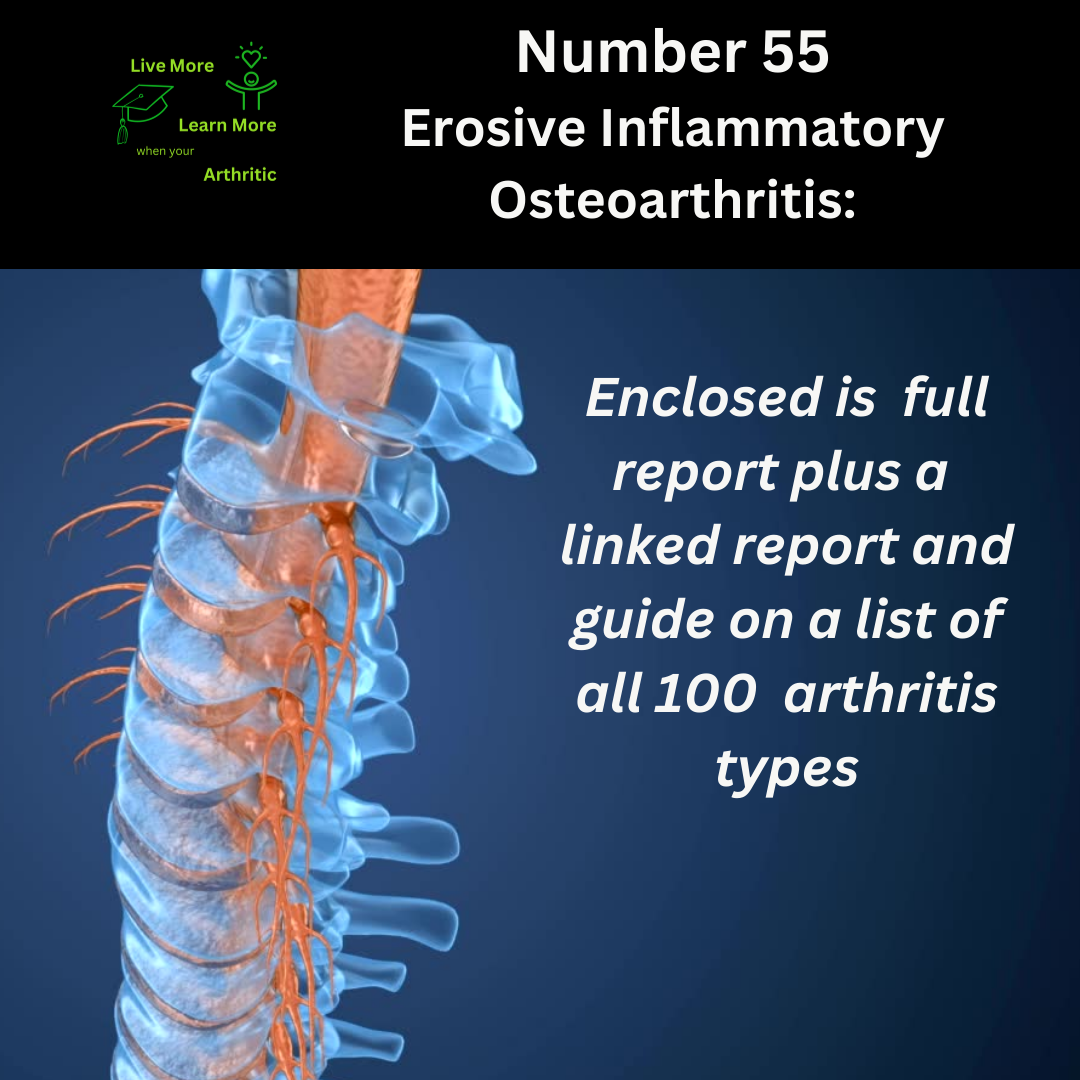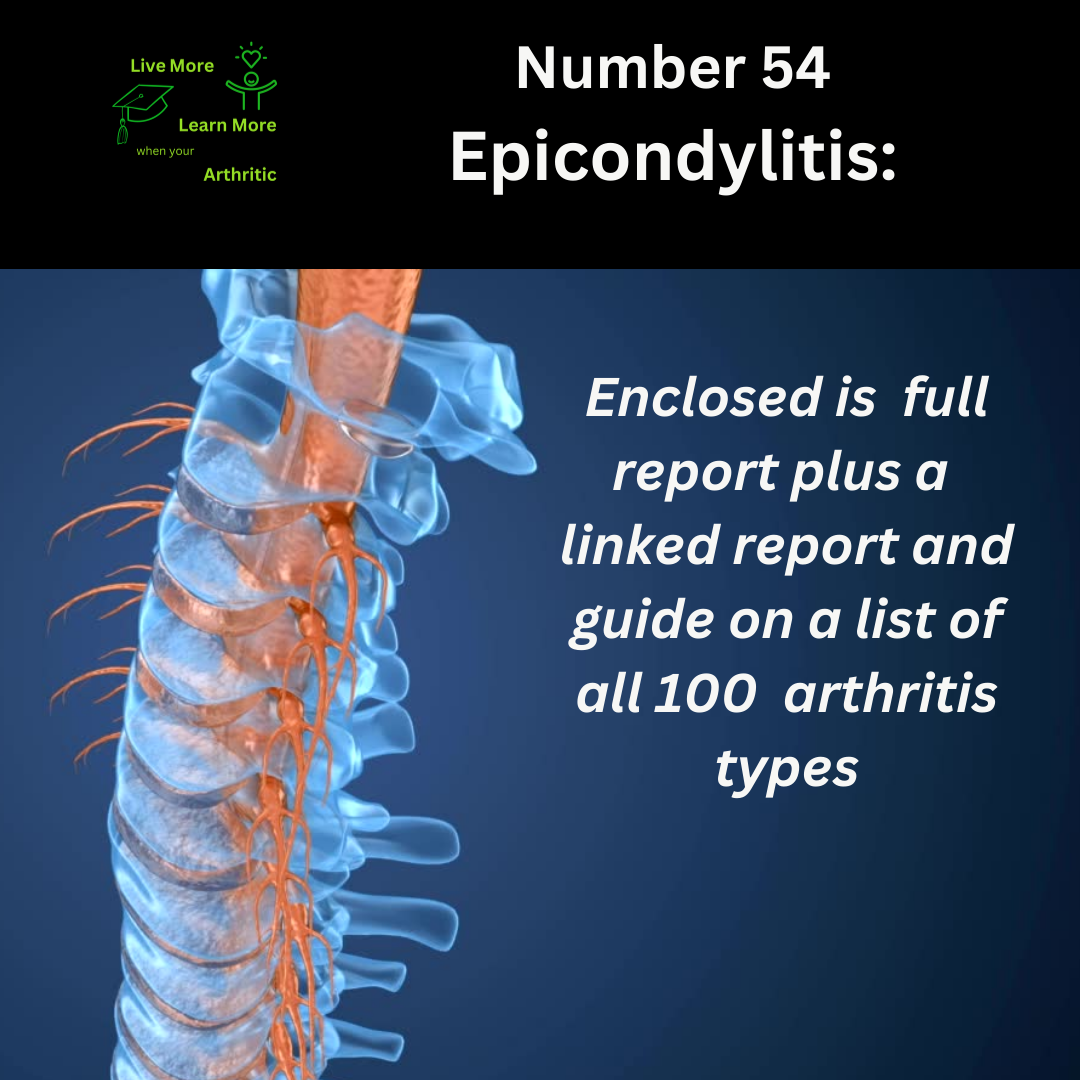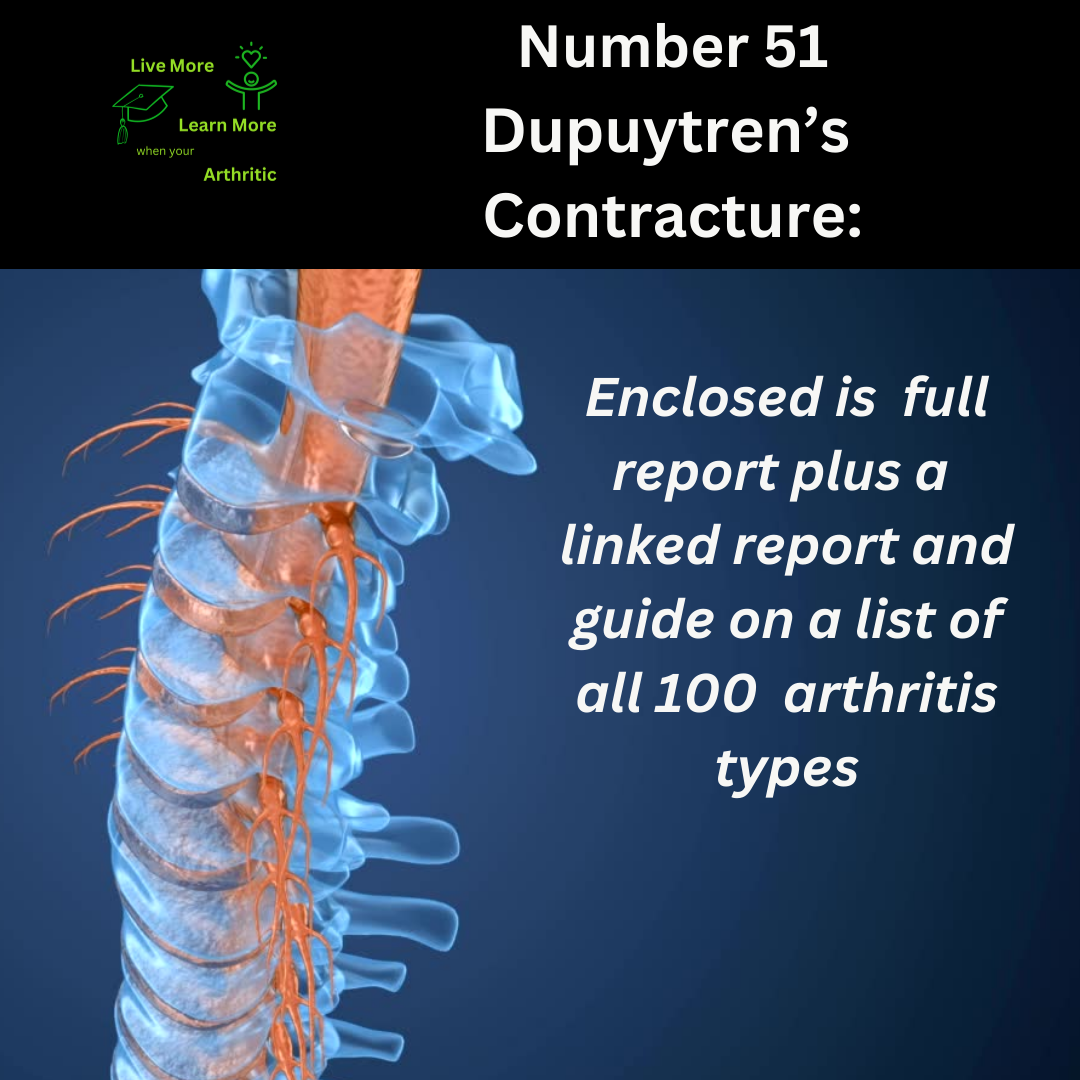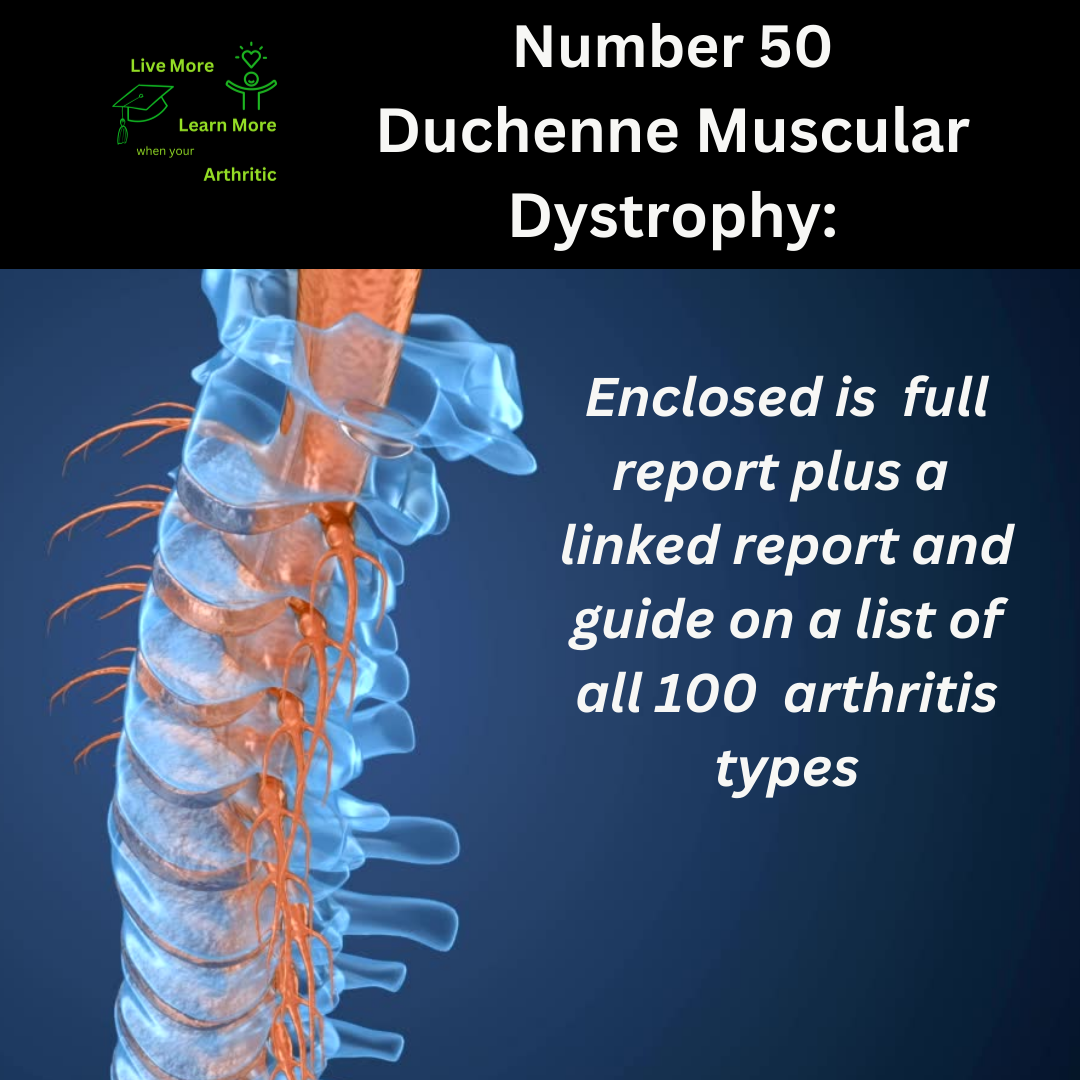ArthritiCare
-
The Great Debate: NSAIDs vs. Natural Remedies in the Battle Against Arthritis
Arthritis, the ever-present enemy, lurking in the joints of millions around the globe, can turn even the simplest of tasks into a Herculean feat. But when it comes to managing this formidable foe, the question remains: Do we turn to the mighty Non-Steroidal Anti-Inflammatory Drugs (NSAIDs), like Ibuprofen and Naproxen, or do we embrace the natural remedies that promise relief without the side effects? Let’s dive deep into this conundrum with humor, wit, and a good dose of facts.
-
Erosive Inflammatory Osteoarthritis: Number 55 on the list of 100 types of Arthritis
-
Corticosteroids vs. Natural Remedies: The Ultimate Arthritis Showdown! YouTube Video
-
Corticosteroids vs. Natural Remedies: A Battle for the Ages in Arthritis Care
Arthritis is like that one guest at your party who just won’t leave. They show up uninvited, and once they’re in, they make themselves comfortable in your joints, bringing along their favorite party favors: pain, swelling, and stiffness. When this unwanted guest shows up, you have a choice—either call in the big guns like corticosteroids (hello, Prednisone) or go the natural route with remedies your grandma might’ve recommended. But which one really wins in the fight against arthritis? Let’s break it down, with a dose of wit, humor, and some science-backed truths.
-
Natural Ways to Combat Arthritis: Your Ultimate Guide! – YouTube Video
-
Epicondylitis: Number 54 on the list of 100 types of Arthritis
The Tale of Epicondylitis: A Real Pain in the Elbow
Description of the Disease: Epicondylitis refers to the inflammation of tendons that attach to the bony prominence (epicondyle) on the outside (lateral) or inside (medial) of the elbow. When these tendons become irritated or damaged due to repetitive motions, it can lead to pain and discomfort.
-
Arthritis and Natural Pathways to Reduce Its Risks
Let’s face it—when you think of arthritis, you probably picture achy joints and creaky bones. But, believe it or not, there’s more to this story. Arthritis is a complex, often misunderstood condition that can turn your life into a daily obstacle course. However, fear not, dear reader, because there are natural ways to reduce the risks of arthritis and all those pesky interconnected risks and comorbidities.
-
The Root Causes of Exercise-Induced Compartment Syndrome
Exercise-Induced Compartment Syndrome (EICS) might sound like a term from a medical textbook, but for those living with it, it’s a constant battle between passion and pain. Picture this: You lace up your running shoes, hit the pavement, and then, out of nowhere, your muscles feel like they’re being squeezed in a vise. The pain isn’t just discomfort; it’s intense, burning, and unrelenting. Welcome to the world of EICS.
EICS occurs when muscles swell during exercise, increasing pressure within a closed muscle compartment. This pressure buildup impairs blood flow and nerve function, leading to severe pain, swelling, and sometimes even numbness or paralysis. It’s most commonly seen in athletes, runners, or anyone who engages in repetitive physical activity. But the reality is that anyone can develop this condition, and it can significantly alter a person’s lifestyle.
-
Enteropathic Arthritis: Number 53 on the list of 100 types of Arthritis
-
Bone Fractures and Arthritis: The Hidden Connection – ArthritiCare
- ArthritiCare, Arthritis Care, Arthritis News, Arthritis Pain, Osteoarthritis (OA), Rheumatoid Arthritis (RA)
Bone Fractures and Arthritis: A Tale of Interconnected Risks
Let’s start with a scenario: You wake up, stretch your aching joints, and hear that all-too-familiar pop. It’s the same sound your cereal makes, except it’s your body and not the breakfast bowl. As you try to stand, you feel a sharp pain. “Is it just arthritis again?” you wonder. But what if that pain is more than just arthritis? What if it’s a fracture?
-
Ehlers-Danlos Syndrome: Number 52 on the list of 100 types of Arthritis
-
Understanding the 6 Sub-types of Rheumatoid Arthritis – YouTube Video
- ArthritiCare, Arthritis Care, Arthritis News, Arthritis Pain, Arthritis Root Causes, Osteoarthritis (OA)
The Root Cause of Erosive Inflammatory Osteoarthritis
Erosive Inflammatory Osteoarthritis (EIOA) is a particularly aggressive form of osteoarthritis, a condition that typically involves the gradual wear and tear of cartilage within joints. Unlike regular osteoarthritis, which progresses slowly and is often seen as a part of aging, EIOA strikes with a vengeance, causing more rapid and severe joint damage. The condition primarily affects the small joints of the hands, leading to painful inflammation, swelling, and eventually, the erosion of bone. Imagine trying to open a jar or grip a pen while feeling like your joints are on fire—that’s what living with EIOA can be like.
EIOA often begins in middle age, with women being disproportionately affected. It’s a cruel twist of fate that turns everyday tasks into painful challenges. The disease progresses in phases, starting with inflammation and pain, followed by the destructive phase where the cartilage deteriorates, leading to bone exposure and, eventually, deformity. The hands become less functional, and the simplest tasks—writing, typing, or even holding a coffee cup—can become torturous. EIOA is not just about physical pain; it’s an emotional battle as well. The frustration of losing the ability to perform basic tasks can lead to feelings of helplessness and despair.
-
Dupuytren’s Contracture: Number 51 on the list of 100 types of Arthritis
-
Liver Disease and Arthritis: The Unexpected Connection – YouTube Video
-
Liver Disease and Arthritis: Interconnected Risks
Living with arthritis is no small feat, and the challenges only multiply when you consider the possible interconnected risks, such as the development of liver disease. But what exactly links these two conditions? What are the chances that arthritis could lead to liver disease, and how does this affect life expectancy? Let’s dive into the details, with a touch of humor, wit, and a heavy dose of science-backed facts, to make this a little easier to digest.
-
Duchenne Muscular Dystrophy: Number 50 on the list of 100 types of Arthritis
Understanding Duchenne Muscular Dystrophy
Duchenne muscular dystrophy (DMD) is a genetic disorder characterized by progressive muscle degeneration and weakness. It primarily affects boys, with symptoms typically appearing between the ages of 3 and 5. The condition is caused by a mutation in the gene that encodes dystrophin, a protein essential for muscle strength and function.
-
Understanding Inflammatory Arthritis: Types, Symptoms, and Management – YouTube Video
-
Chronic Cramps and Spasms Linked to Increased Arthritis: A Twisted Tango
Picture this: You’re walking down the street, minding your own business, when suddenly your muscles seize up in a vice grip of pain. You’re not sure if you should scream, cry, or just hobble to the nearest bench and contemplate the cruel joke your body is playing on you. Sound familiar? If it does, you might be one of the unlucky souls who’ve experienced chronic cramps and spasms. Now, throw arthritis into the mix, and you’ve got yourself a double dose of discomfort that can turn daily life into a real pain in the… well, everywhere.
Let’s unravel the tangled mess that is chronic cramps, spasms, and their cozy relationship with arthritis. We’ll dive into what these cramps and spasms are, why they happen more often if you have arthritis, and what this means for your life moving forward. Trust me, it’s not all doom and gloom—there’s a sprinkle of humor in here to keep you chuckling (even if it’s through gritted teeth).





